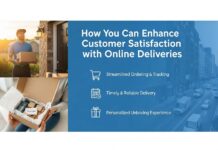Influence means everything in the world of business. Creating a strong brand identity requires you to construct an image that is reflective of your company as a forward-thinking leader and pioneer in the industry.
Email campaign ideas for thought leadership are establishing a brand identity with design, educating the audience through curated content, reinforcing expertise by contributing to other media platforms, writing newsletters that anticipate future trends, and influencing customers using opinions.
What sets email apart from other content mediums is its ability to perform the dual task of being content in itself as well as a way of distributing content. This makes emails one of the most effective and efficient methods of building thought leadership for your brand. In this article, I list five email strategies that will help you boost thought leadership.
5 Innovative Email Strategies to Master Thought Leadership
1. Create Email Design That Establishes a Brand Identity
Leaving a lasting impression on your audience is important when trying to express authority in your industry. If they don’t remember who you are, then they definitely don’t care if you are credible. Emails are a great way to establish your brand identity, as they are the easiest way to reach anyone who shows interest in your products or services.
The visual appeal of your email plays an integral role in determining the customer’s first impression of your brand. Use your company’s color palette when designing emails, and try not to go overboard with too many colors, fonts, or elements.
Each component evokes particular emotions and feelings within your customers and communicates your brand’s goals and values. You can teach your audience to associate these design choices with your brand identity by sticking to them consistently.
Mentioning your brand name a minimum of three times in every email is the best way to familiarize your audience with your brand name. Your company name can be included in a variety of spaces like the subject line, the body of your email, or even using the company signature to sign off at the very end.
2. Educate Your Audience Through Informative Content
When trying to show your expertise in a field, your customers need to engage with your brand so that they can learn more and get to know you better. Emails are an effective way of distributing content and resources that can give your audience a better understanding of what you have to offer. This helps you add value to your brand and results in loyal customers.
Your emails can function in the same fashion as a blog post. Use interesting subject lines such as “Top 10 tips for…”, “5 hacks that will…” and “7 things you should know about…” When you include gold nuggets packed with information in your emails, you reinforce your authority by showcasing the deep knowledge you have of your field.
If you run out of ideas, you can use FunnelTeacher.com’s cool email subject line generator tool for some awesome suggestions. The best part? It’s completely free!
You may also include other resources, such as your brand story, case studies, and ebooks, which will increase the audience’s understanding of you.
Remember to follow up with people who have not yet accessed the resources. It can be a short email containing snippets of the juiciest bits from an ebook or video. This portrays you as a brand that constantly keeps customers in mind and thinks one step ahead.
3. Reinforce Expertise by Contributing to Various Outlets
Webinars are an effective way to inform your audience of the knowledge you imbibe within your field. Using emails, you can send out invitations to your segmented audience and follow up with reminders regarding the same.
After you have conducted the said webinar, emails can be used to send out relevant resources such as presentation slides, videos, and whitepapers that delve deeper into the topic.
If you conduct a webinar in person, you can also share group photographs from the event. The main idea is to constantly keep in touch with your audience while reminding them that you have a plethora of information they can benefit from.
Another way to exert your expertise is by sending emails with content from other platforms and media outlets. Let’s say you are a guest speaker at an event. You can formulate an email that provides an invitation to the event.
You may also include a summary of the relevant discussions at the event, along with attaching a link to the recording of your talk. By doing so, you can leverage your email list to show your influence and reach in the industry.
4. Write Newsletters Like a Forward-thinking Leader
Staying up to date with new trends and discoveries within your field is necessary for thought leadership. If you can create content on current and upcoming industry trends and share it with your target audience, it presents you as a pioneer in your field. You also add value to your brand and establish yourself as an industry leader who is constantly learning more about your field through research.
You can distribute information about the newest developments in your industry via email through a newsletter. Newsletters serve as a platform for sharing diverse information with your target audience, and distribution through email increases your reach. Moreover, people are more likely to access your newsletter if they are sent through email.
Begin by publishing a bi-weekly newsletter to test out your audience’s response. Keep a close eye on the metrics and decide how frequent your newsletters should be. Analytics will also help you understand what is and isn’t working for your customers.
I’ve explored the importance of analytics further in my article on how business analytics helps small businesses grow.
5. Use Opinion-based Content to Influence Customers
Being backed by public figures and professionals in your field works like a seal of approval. Your customers will easily trust you if their role model shows confidence in your brand. Collaborate on campaigns alongside influencers and other professionals who have their own following.
One way you can do that is through special offers and discount codes that they can share through their email and yours. This will also increase your reach to various audiences. A collaborative email campaign allows you to create ambassadors who can endorse your brand and vouch for your products or services.
You can also use customer testimonials and reviews to gain support for your brand. People like to know exactly what they are buying. By providing testimonials, you give them a close look into how they can benefit from you.
While sharing good responses from your customers can show how much love you have managed to garner, sharing constructive feedback is an opportunity to show yourself as an honest company.
Let’s say you receive some complaints about your packaging. Keeping in mind that transparency is key to thought leadership, you can now create an email campaign that works in your favor. Simply share those complaints in your email with a subject line that reads, “We hear you!” and launch your new packaging alongside. This makes your customers feel heard and understood and creates a sense of loyalty towards your brand.
I also suggest being assertive if and when needed. Yes, you’re a brand that needs visibility but you shouldn’t come across as a walkover. My article on ‘The Power of Assertiveness’ talks about how being assertive can increase your sales and your worth.





